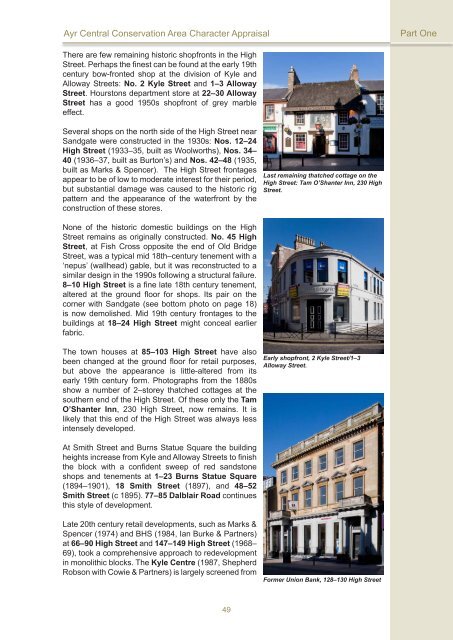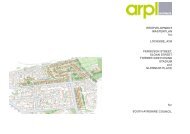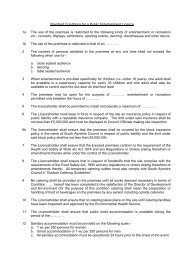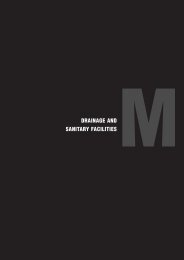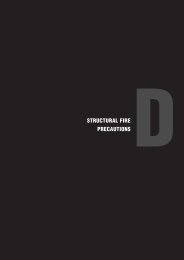Ayr Central Conservation Area Character Appraisal - South Ayrshire ...
Ayr Central Conservation Area Character Appraisal - South Ayrshire ...
Ayr Central Conservation Area Character Appraisal - South Ayrshire ...
You also want an ePaper? Increase the reach of your titles
YUMPU automatically turns print PDFs into web optimized ePapers that Google loves.
<strong>Ayr</strong> <strong>Central</strong> <strong>Conservation</strong> <strong>Area</strong> <strong>Character</strong> <strong>Appraisal</strong><br />
Part One<br />
There are few remaining historic shopfronts in the High<br />
Street. Perhaps the finest can be found at the early 19th<br />
century bow-fronted shop at the division of Kyle and<br />
Alloway Streets: No. 2 Kyle Street and 1–3 Alloway<br />
Street. Hourstons department store at 22–30 Alloway<br />
Street has a good 1950s shopfront of grey marble<br />
effect.<br />
Several shops on the north side of the High Street near<br />
Sandgate were constructed in the 1930s: Nos. 12–24<br />
High Street (1933–35, built as Woolworths), Nos. 34–<br />
40 (1936–37, built as Burton’s) and Nos. 42–48 (1935,<br />
built as Marks & Spencer). The High Street frontages<br />
appear to be of low to moderate interest for their period,<br />
but substantial damage was caused to the historic rig<br />
pattern and the appearance of the waterfront by the<br />
construction of these stores.<br />
Last remaining thatched cottage on the<br />
High Street: Tam O’Shanter Inn, 230 High<br />
Street.<br />
None of the historic domestic buildings on the High<br />
Street remains as originally constructed. No. 45 High<br />
Street, at Fish Cross opposite the end of Old Bridge<br />
Street, was a typical mid 18th–century tenement with a<br />
‘nepus’ (wallhead) gable, but it was reconstructed to a<br />
similar design in the 1990s following a structural failure.<br />
8–10 High Street is a fine late 18th century tenement,<br />
altered at the ground floor for shops. Its pair on the<br />
corner with Sandgate (see bottom photo on page 18)<br />
is now demolished. Mid 19th century frontages to the<br />
buildings at 18–24 High Street might conceal earlier<br />
fabric.<br />
The town houses at 85–103 High Street have also<br />
been changed at the ground floor for retail purposes,<br />
but above the appearance is little-altered from its<br />
early 19th century form. Photographs from the 1880s<br />
show a number of 2–storey thatched cottages at the<br />
southern end of the High Street. Of these only the Tam<br />
O’Shanter Inn, 230 High Street, now remains. It is<br />
likely that this end of the High Street was always less<br />
intensely developed.<br />
Early shopfront, 2 Kyle Street/1–3<br />
Alloway Street.<br />
At Smith Street and Burns Statue Square the building<br />
heights increase from Kyle and Alloway Streets to finish<br />
the block with a confident sweep of red sandstone<br />
shops and tenements at 1–23 Burns Statue Square<br />
(1894–1901), 18 Smith Street (1897), and 48–52<br />
Smith Street (c 1895). 77–85 Dalblair Road continues<br />
this style of development.<br />
Late 20th century retail developments, such as Marks &<br />
Spencer (1974) and BHS (1984, Ian Burke & Partners)<br />
at 66–90 High Street and 147–149 High Street (1968–<br />
69), took a comprehensive approach to redevelopment<br />
in monolithic blocks. The Kyle Centre (1987, Shepherd<br />
Robson with Cowie & Partners) is largely screened from<br />
Former Union Bank, 128–130 High Street<br />
49


